 W
WThe L'Oréal-UNESCO For Women in Science Awards aim to improve the position of women in science by recognizing outstanding women researchers who have contributed to scientific progress. The awards are a result of a partnership between the French cosmetics company L'Oréal and the United Nations Educational, Scientific and Cultural Organization (UNESCO) and carry a grant of $100,000 USD for each laureate. This award is also known as the L'Oréal-Helena Rubinstein Women in Science Awards.
 W
WBeatriz Álvarez Sanna is a Uruguayan chemist and biochemistry professor at the Faculty of Sciences of the University of the Republic. She researches in the areas of redox biochemistry and enzymology. In 2013 she was the winner of the L'Oréal-UNESCO Award for Women in Science.
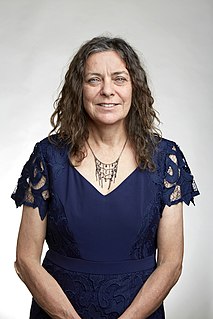 W
WJillian Fiona Banfield is Professor at the University of California, Berkeley with appointments in the Earth Science, Ecosystem Science and Materials Science and Engineering departments. She leads the Microbial Research initiative within the Innovative Genomics Institute, is affiliated with Lawrence Berkeley National Laboratory and has a position at the University of Melbourne, Australia. Some of her most noted work includes publications on the structure and functioning of microbial communities and the nature, properties and reactivity of nanomaterials.
 W
WMárcia Cristina Bernardes Barbosa is a Brazilian physicist known for her research on the properties of water, and for her efforts for improving the conditions for women in academia. She is a professor at UFRGS, and a director of the Brazilian Academy of Sciences.
 W
WBonnie Lynn Bassler is an American molecular biologist who has researched chemical communication between bacteria known as quorum sensing, and contributed to the idea that disruption of chemical signaling can be used as an antimicrobial therapy. She is the Squibb Professor in Molecular Biology and chair of the Department of Molecular Biology at Princeton University. She is a Howard Hughes Medical Institute Investigator and her research focuses on bacterial quorum sensing, which is the cell-to-cell communication in bacteria.
 W
WPamela Jane Bjorkman NAS, AAAS is an American biochemist. She is the David Baltimore Professor of Biology and Biological Engineering at the California Institute of Technology (Caltech), Her research centers on the study of the three-dimensional structures of proteins related to Class I MHC, or Major Histocompatibility Complex, proteins of the immune system and proteins involved in the immune responses to viruses. Bjorkman is most well known as a pioneer in the field of structural biology.
 W
WElizabeth Helen Blackburn, is an Australian-American Nobel laureate who is the former President of the Salk Institute for Biological Studies. Previously she was a biological researcher at the University of California, San Francisco, who studied the telomere, a structure at the end of chromosomes that protects the chromosome. In 1984, Blackburn co-discovered telomerase, the enzyme that replenishes the telomere, with Carol W. Greider. For this work, she was awarded the 2009 Nobel Prize in Physiology or Medicine, sharing it with Greider and Jack W. Szostak, becoming the first Australian woman Nobel laureate. She also worked in medical ethics, and was controversially dismissed from the Bush Administration's President's Council on Bioethics.
 W
WHabiba Bouhamed Chaabouni is professor of medical genetics at Tunis University.
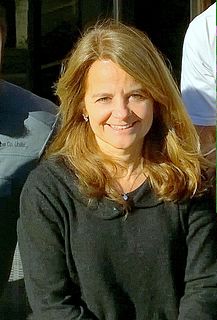 W
WCecilia Bouzat is an Argentine biochemist, who studies neurological disorders. In 2014 she was honored as the Latin American Laureate by the L'Oréal-UNESCO Award for Women in Science. In 2015, she was listed as one of BBC's 100 Women.
 W
WMaría Alejandra Bravo de la Parra is a Mexican biochemist who was laureated with the 2010 L'Oréal-UNESCO Award for Women in Science – Latin America for her work on a bacterial toxin that acts as a powerful insecticide. Bravo has co-authored multiple papers with her husband Dr. Mario Soberon.
 W
WDame Margaret Anne Brimble is a New Zealand chemist. Her research has included investigations of shellfish toxins and means to treat brain injuries.
 W
WJoanne Chory is an American plant biologist and geneticist. Chory is a professor and director of the Plant Molecular and Cellular Biology Laboratory, at the Salk Institute for Biological Studies and an investigator of the Howard Hughes Medical Institute.
 W
WPascale Cossart is a French bacteriologist who is affiliated with the Pasteur Institute of Paris. She is the foremost authority on Listeria monocytogenes, a deadly and common food-borne pathogen responsible for encephalitis, meningitis, bacteremia, gastroenteritis, and other diseases.
 W
WLourdes J. Cruz is a Filipino biochemist whose research has contributed to the understanding of the biochemistry of toxic peptides from the venom of fish-hunting Conus marine snails. Throughout the Philippines, she is known as the Sea Snail Venom Specialist. The characterization of over 50 biologically active peptides from the snail's venom had been made possible, in part, by her studies. Scientific findings regarding the peptides found in snails have applications in diagnostic tools for cancers and the development of drugs for the treatment of neurological disorders. She has also contributed to the development of conotoxins as tools for examining the activity of the human brain. Her contributions to science have earned her several awards and acknowledgements including being named a National Scientist of the Philippines in 2006.
 W
WBaroness Ingrid Daubechies is a Belgian physicist and mathematician. She is best known for her work with wavelets in image compression.
 W
WDame Caroline Dean is a British plant scientist working at the John Innes Centre. She is focused on understanding the molecular controls used by plants to seasonally judge when to flower. She is specifically interested in vernalisation — the acceleration of flowering in plants by exposure to periods of prolonged cold. She has also been on the Life Sciences jury for the Infosys Prize from 2018.
 W
WAnne Dejean-Assémat is a French molecular biologist working on the mechanisms leading to the development of human cancers. As Research Director at INSERM and Professor at the Pasteur Institute, she heads the Laboratory of Nuclear Organization and Oncogenesis at the Pasteur Institute and the INSERM Unit 993 'Molecular and Cellular Biology of Tumors'.
 W
WEugenia Maria del Pino Veintimilla is a developmental biologist at the Pontificia Universidad Catolica del Ecuador (Pontifical Catholic University of Ecuador) in Quito. She was the first Ecuadorian citizen to be elected to the United States National Academy of Sciences (2006). She was awarded the 2019 Prize of the Latin American Society for Developmental Biology for her strong contributions to research in Ecuador, and in general to promoting Developmental Biology in Latin America.
 W
WDame Athene Margaret Donald is a British physicist. She is Professor of Experimental Physics at the University of Cambridge, and Master of Churchill College, Cambridge.
 W
WMildred Dresselhaus, known as the "Queen of Carbon Science", was an American nanotechnologist. She was an Institute Professor and Professor Emerita of physics and electrical engineering at the Massachusetts Institute of Technology. Dresselhaus won numerous awards including the Presidential Medal of Freedom, the National Medal of Science, the Enrico Fermi Award and the Vannevar Bush Award.
 W
WElaine V. Fuchs is an American cell biologist, famous for her work on the biology and molecular mechanisms of mammalian skin and skin diseases, who helped lead the modernization of dermatology. Fuchs pioneered reverse genetics approaches, which assess protein function first and then assess its role in development and disease. In particular, Fuchs researches skin stem cells, and their production of hair and skin. She is an investigator at the Howard Hughes Medical Institute and the Rebecca C. Lancefield Professor of Mammalian Cell Biology and Development at The Rockefeller University.
 W
WAndrea Gamarnik is an Argentinian molecular virologist noted for her work on Dengue fever. She received a 2016 L'Oréal-UNESCO Awards for Women in Science fellowship for work on mosquito-borne viruses include Dengue fever. She studied at the University of Buenos Aires and the University of California, San Francisco. She has done work for the Leloir Institute. She is the first female Argentinian to become a member of the American Academy of Microbiology.
 W
WDr. Bibi Ameenah Firdaus Gurib-Fakim GCSK, CSK is a Mauritian politician and biodiversity scientist who served as the sixth president of Mauritius from 2015 to 2018. In December 2014, she was selected to be the presidential candidate of the Alliance Lepep. After Kailash Purryag resigned on 29 May 2015, both Prime Minister Sir Anerood Jugnauth and Leader of the Opposition Paul Berenger positively welcomed her nomination, which was unanimously approved in a vote in the National Assembly.
 W
WKaren Astrid Hallberg is an Argentine professor of physics at the Balseiro Institute. She is Research Director at the Bariloche Atomic Centre and a 2019 L'Oreal-UNESCO Award for Women in Science Laureate.
 W
WNancy Ip is a Hong Kong neuroscientist. She is currently the Vice-President of Research and Development, the Morningside Professor of Life Science, and Director of the State Key Laboratory of Molecular Neuroscience at The Hong Kong University of Science and Technology (HKUST).
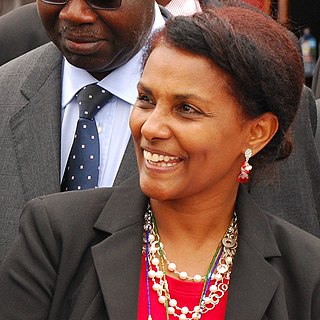 W
WSegenet Kelemu is an Ethiopian scientist, noted for her research as a molecular plant pathologist, and outstanding scientific leadership. For close to three decades, Kelemu and her team's research has contributed to addressing agricultural constraints in Africa, Asia, Latin America and North America.
 W
WJanet Kelso is a South African computational biologist and Group leader of the Minerva Research Group for Bioinformatics at the Max Planck Institute for Evolutionary Anthropology.
 W
WDr. Brigitte Kieffer is a French molecular neurobiologist known for her research of opiate receptors. Her areas of expertise include: molecular psychiatry, addiction, mood disorders, pain, and developmental disorders. Kieffer has international reputation in the field of opiate receptors, and has paved the way for better understanding of brain mechanisms involved in pain, mental illness, and drug addiction. She continues to pursue research and directs a team of over 300 people. Her discoveries have shed light on how substances like morphine or heroin can kill pain, and foster addiction.
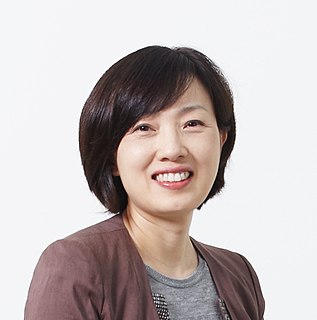 W
WV. Narry Kim is a South Korean biochemist and microbiologist, best known for her work on microRNA biogenesis. Her pioneering studies have laid the groundwork for the biology of microRNA and contributed to the improvement of RNA interference technologies.
 W
WEugenia Kumacheva is a University Professor and Distinguished Professor of Chemistry at the University of Toronto. Her research interests span across the fields of fundamental and applied polymers science, nanotechnology, microfluidics, and interface chemistry. She was awarded the L'Oréal-UNESCO Awards for Women in Science in 2008 "for the design and development of new materials with many applications including targeted drug delivery for cancer treatments and materials for high density optical data storage". In 2011, she published a book on the Microfluidic Reactors for Polymer Particles co-authored with Piotr Garstecki. She is Canadian Research Chair in Advanced Polymer Materials. She is Fellow of the Royal Society (FRS) and a Fellow of the Royal Society of Canada (FRSC).
 W
WAnne L'Huillier is a French physicist, and professor of atomic physics at Lund University.
 W
WSusana López Charretón is a Mexican virologist specialized in understanding the mechanisms of infection of rotavirus. López Charretón has led a research program as principal investigator at the Biotechnology Institute (UNAM) in Cuernavaca, Mexico for over 25 years.
 W
WMaki Kawai is a Japanese chemist who developed spatially selective single-molecule spectroscopy. In 2018, she became the first woman to become president of the Chemical Society of Japan.
 W
WPhilippa "Pippa" Marrack, Ph.D, FRS is an English immunologist and academic, based in the United States, best known for her research and discoveries pertaining to T cells. Marrack is the Ida and Cecil Green Professor and chair of the Department of Biomedical Research at National Jewish Health and a Distinguished Professor of immunology and microbiology at the University of Colorado Denver.
 W
WDame Anne Laura Dorinthea McLaren, was a British scientist who was a leading figure in developmental biology. Her work helped lead to human in vitro fertilisation (IVF), and she received many honours for her contributions to science, including election as fellow of the Royal Society.
 W
WGloria del Carmen Montenegro Rizzardini is a botanist, biologist, academic and scientist. She is Professor of Botany at the Pontificia Universidad Católica de Chile. She won the L'Oréal-UNESCO Awards for Women in Science in 1998. She has undertaken pioneering work in botany and conservation of native flora, using scientific approaches to protect plant ecosystems.
 W
WTsuneko Okazaki is a Japanese pioneer of molecular biology known for her work on DNA replication and specifically for discovering Okazaki fragments, along with her husband Reiji. Dr. Tsuneko Okazaki has continued to be involved in academia, contributing to more advancements in DNA research.
 W
WMary Osborn is a L'Oréal-UNESCO Women in Science Award-winning English cell biologist who, until she stopped running an active laboratory in 2005, was on the scientific staff at the Max Planck Institute for Biophysical Chemistry, Göttingen, Germany. Osborn established two techniques frequently used by cell biologists. She pioneered both molecular weight determination of proteins using SDS PAGE and immunofluorescence microscopy. Osborn also used the immunofluorescence microscopy method to work out the details of the eukaryotic cytoskeleton. Small differences in the intermediate filament constituents helped her distinguish differentiated cells from each other. She also found intermediate filament immunofluorescence differences between normal versus cancer cells. Mary Osborn has been a prominent spokesperson for women in science.
 W
WChristine Petit is a French geneticist. She holds professorships at the Collège de France and the Pasteur Institute.
 W
WRashika Ahmed Fathi El Ridi is a professor of Immunology at the Department of Zoology Faculty of Science, Cairo University.
 W
WJanet Rossant, is a developmental biologist well known for her contributions to the understanding of the role of genes in embryo development. She is a world renowned leader in developmental biology. Her current research interests focus on stem cells, molecular genetics, and developmental biology. Specifically, she uses cellular and genetic manipulation techniques to study how genes control both normal and abnormal development of early mouse embryos. Rossant has discovered information on embryo development, how multiple types of stem cells are established, and the mechanisms by which genes control development. In 1998, her work helped lead to the discovery of the trophoblast stem cell, which has assisted in showing how congenital anomalies in the heart, blood vessels, and placenta can occur.
 W
WMaría Teresa Ruiz is a Chilean astronomer who was the first woman to receive Chile's National Prize for Exact Sciences, the first female recipient of a doctorate in astrophysics at Princeton University, and the first woman president of the Chilean Academy of Sciences. She is known, too, for the discovery of the brown dwarf Kelu-1.
 W
WMargarita Salas Falgueras, 1st Marchioness of Canero was a Spanish scientist, medical researcher, and author in the fields of biochemistry and molecular genetics.
 W
WMyriam Paula Sarachik was a Belgian-born American experimental physicist. From 1996, she was a distinguished professor of physics at the City College of New York.
 W
WIngrid Eileen Scheffer is an Australian paediatric neurologist and senior research fellow at the Florey Institute of Neuroscience and Mental Health. She has made several major advances in the field of epilepsy research. Scheffer is credited with finding the first gene implicated in epilepsy. She has also described and classified novel epileptic syndromes such as Epilepsy limited to Females with Mental Retardation.
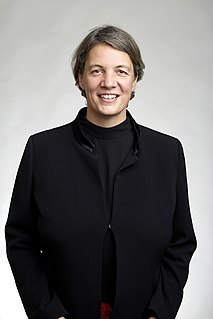 W
WMichelle Yvonne Simmons, is a Scientia Professor of Quantum Physics in the Faculty of Science at the University of New South Wales and has twice been an Australian Research Council Federation Fellow and is an Australian Research Council Laureate Fellow. She is the Director of the Australian Research Council Centre of Excellence for Quantum Computation & Communication Technology and is recognised internationally as a pioneer in atomic electronics. She is also editor-in-chief of npj Quantum Information, an academic journal publishing articles in the emerging field of quantum information science. On 25 January 2018, Simmons was named as the 2018 Australian of the Year for her work and dedication to quantum information science. On 10 June 2019, Simmons was appointed an Officer of the Order of Australia (AO) in the 2019 Queen's Birthday Honours in recognition of her "distinguished service to science education as a leader in quantum and atomic electronics and as a role model."
 W
WNicola Ann Spaldin FRS is Professor of Materials Theory at ETH Zurich, known for her pioneering research on multiferroics.
 W
WJoan Elaine Argetsinger Steitz is Sterling Professor of Molecular Biophysics and Biochemistry at Yale University and Investigator at the Howard Hughes Medical Institute. She is known for her discoveries involving RNA, including ground-breaking insights into how ribosomes interact with messenger RNA by complementary base pairing and that introns are spliced by small nuclear ribonucleic proteins (snRNPs), which occur in eukaryotes. In September 2018, Steitz won the Lasker-Koshland Award for Special Achievement in Medical Science. The Lasker award is often referred to as the 'American Nobel' because 87 of the former recipients have gone on to win Nobel prizes.
 W
WGrace Oladunni Taylor is a biochemist, formerly at University of Ibadan, Nigeria. She was the second woman to be inducted into the Nigerian Academy of Science and the first African awarded a L'Oréal-UNESCO Award for Women in Science.
 W
WShirley Marie Tilghman, is a North American scholar in molecular biology and an academic administrator. She is now a professor of molecular biology and public policy and president emerita of Princeton University. In 2002, Discover magazine recognized her as one of the 50 most important women in science.
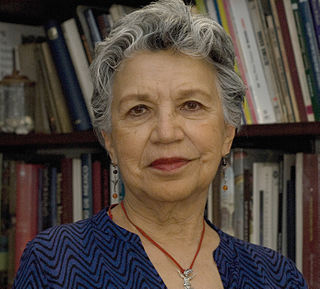 W
WSilvia Torres-Peimbert is a Mexican astronomer. She won the L'Oréal-UNESCO Awards for Women in Science in 2011 for Latin America for her work determining the chemical composition of nebulae.
 W
WClaire Voisin is a French mathematician known for her work in algebraic geometry. She is a member of the French Academy of Sciences and holds the chair of Algebraic Geometry at the Collège de France.
 W
WAda E. Yonath is an Israeli crystallographer best known for her pioneering work on the structure of the ribosome. She is the current director of the Helen and Milton A. Kimmelman Center for Biomolecular Structure and Assembly of the Weizmann Institute of Science.
 W
WMayana Zatz is a Brazilian molecular biologist and geneticist. She is a professor at the University of São Paulo, currently being its Research dean.